The Year the Lights Came On Read online
Table of Contents
Copyright
THE YEAR THE LIGHTS CAME ON
Dedication
PREFACE
AUTHOR’S NOTE
1
2
3
4
5
6
7
8
9
10
11
12
13
14
15
16
17
18
19
EPILOGUE
AFTERWORD
READER’S GUIDE
The Year the Lights Came On
By Terry Kay
Copyright 2012 by Terry Kay
Cover Copyright 2012 by Ginny Glass and Untreed Reads Publishing
The author is hereby established as the sole holder of the copyright. Either the publisher (Untreed Reads) or author may enforce copyrights to the fullest extent.
Previously published in print, 1976.
This ebook is licensed for your personal enjoyment only. This ebook may not be resold, reproduced or transmitted by any means in any form or given away to other people without specific permission from the author and/or publisher. If you would like to share this book with another person, please purchase an additional copy for each person you share it with. If you’re reading this book and did not purchase it, or it was not purchased for your use only, then please return to your ebook retailer and purchase your own copy. Thank you for respecting the hard work of this author.
This is a work of fiction. Any resemblance to the living or dead is entirely coincidental.
http://www.untreedreads.com
THE YEAR THE
LIGHTS
CAME ON
A NOVEL BY TERRY KAY
Afterword by William J. Scheick
I have written this book to celebrate the memory
of my parents—Toombs Hodges, Sr., and Viola Winn Kay.
I draw still from their strength, from the invisible
giving of their love and warmth.
PREFACE
I HAVE BEEN ASKED which of my books is my favorite. It is a question I cannot answer, for each has been joyful in special (perhaps quirky) ways. To favor one out of the collection has the distasteful appearance to me of demeaning the others. Yet I have never wavered in my opinion on which book has been my most cherished writing experience: it is this one, carrying the title The Year the Lights Came On, published originally in 1976 by Houghton Mifflin Company of Boston.
The reason is simple. It was the first, and being the first, it carries the wonder of discovery. It was also inspired by my childhood, during that post–World War II period when progress in America was signaled in great part by the arrival of electricity to rural communities. Such novels are called coming-of-age stories. Writers resort to writing them because it is the one topic they best understand, factually and intuitively.
Still, in 1976, I had only a smidgen of knowledge about the writing of a novel, yet I did realize the life expectancy of a book was not much greater than an eyeblink. Thus, it has astounded and pleased me that The Year the Lights Came On has remained in print and has found its way into schools via summer reading lists or as supplementary study in history classes and still satisfies the avocational reader with fond memories of the innocence of his or her own childhood.
That is why I chose to rework the book for its new issue by the University of Georgia Press. If it had survived the rigors of time, it deserved a “new and improved” edition. (If such a claim can be made for products ranging from dish detergent to headache tablets, then reworked books ought to enjoy the same proclamation.)
What it means is this: The Year the Lights Came On has been struck with the editor’s pen, making it appropriate for any age group—from elementary school readers to senior citizens. (I want to emphasize that the characters, the narrative, and the heart of the novel remain the same. I have only tightened some of the writing, weeded out some extraneous exclamation marks, removed one or two superfluous scenes, and added a few lines of dialogue here and there to better round out the story.)
I hope readers who are familiar with the original version will not think of this as a compromise. I don’t. I consider it a new adventure—one, I hope, that will continue to please readers for many years to come.
AUTHOR’S NOTE
THE REA (Rural Electrification Administration) does not make or transmit electricity. It is a government agency that provides financing programs and develops standards for cooperatives providing electricity to millions of Americans.
But to those who remember the adventure of electricity in rural America, it was, and is, the REA. The REA is synonymous with all that is real about electricity—lines, poles, transformers, meters, lights, etc. For this reason, and because the setting of this book is 1947, I have used “REA” as an expression, as a forceful and meaningful inclusion of the American speech habit.
This book is fiction—if incident is the standard of fiction. Few things occurred as I have written them. But if mood is a consideration, then this book is, I hope, the biography of millions. It has been the mood that has most interested me, and I have earnestly attempted to remain faithful to those sensations of awe and innocence that visited our imaginations—the year the lights came on.
1
THIS WAS THE BIG GULLY OATH:
“I swear that for the rest of my whole life I won’t never tell what goes on in the Big Gully, and I swear I will always take up for everybody here, no matter what. Cross my heart and hope to die.”
Solemnly repeated, the Big Gully Oath was a stirring commitment and was very often concluded in a cry of allegiance that boys of good friendship are certain to make when spirit is unbridled.
“Ain’t nothin’ never comin’ between none of us!” That is the way it was said, fiercely, proudly, in a sentence perfectly cadenced for a single breath, stabbed with the finality of an exclamation point.
Freeman Boyd started the Big Gully Oath. Freeman had been deeply affected by a comic book about a group of boys (appropriately ragged) who made a unique vow of comradeship and citizenship: they would, together, smite all thieves, murderers, con men, and other vile underworld figures who infested their community. To remain anonymous and perform with desirable flair, the boys slipped into costumes that quaintly resembled the tailoring of Superman’s garments, and immediately they were splendid warriors.
Inspired by his comic book, Freeman organized the Big Gully Crime-Busters. He ordered us into capes and masks of brightly patterned flour sacks, and he appointed us code names. Oddly, the code names were Indian names—Tall Bull, Swift Water, Red Sun, First Star, Standing Fox. I was Little Bird. I wanted to be Little Beaver, but Freeman insisted we were not playing games. Fighting crime was serious business.
The Big Gully Crime-Busters lasted one afternoon, lasted until Wesley, my brother, said, “Freeman, what kinda crime we supposed to be fightin’, anyhow?”
It was a sobering question. None of us could remember when there had been a crime in Emery. Old Man Joe Eberhart had once been arrested for stealing cows, but Old Man Joe Eberhart had been dead for three years.
“You can’t never tell,” Freeman advised us. “There could be a bunch of crimes any day. We got to be on the ready.”
“Well, I ain’t wearin’ no flour sack waitin’ on ’em,” declared Otis Finlay. “What if some crook found us out, anyhow? We’d be cut up like a stuck hog.”
And that is when Freeman first delivered the Big Gully Oath. “To keep everything secret,” he said. “We all got to remember the Big Gully Oath.”
It would become, in time, part of our language.
&nbs
p; *
The Big Gully was a ripped-open place, a deep, wide erosion with high walls and scoop-outs that we called caves. It had a flooring of white sand, sifted by rain from fields planted perilously close to its edge. On moon nights, the white sand was like a still stream frozen against shores of red clay.
None of us knew who had discovered the Big Gully, or who had capitalized it, big B, big G. It was always there, and we had always regarded it as a place of mystic character. The Big Gully accommodated our pretending, became what we wished. It was the West. It was the unknown mountain range surrounding Tarzan’s jungles. It was the last stronghold of the Japs. It was another planet, uncharted, uninviting. In the Big Gully, there were cowboys and Indians, lions, soldiers, and curious little men who had lately zipped down from the clouds, chased by Flash Gordon.
There was another thing about the Big Gully: it was where we deliberated our lives, pondered our Now and Then in high, boyish voices with southern sounds—words with missing g-endings, vowels pressed until o’s rolled out like hoops pushed by children.
In those early philosophic exchanges—emphasized by many yeahs and much spitting—we began to develop serious perspectives of our purpose, our destiny. We inevitably concluded that there were those whose status and fortunes were grander than ours.
“It beats all,” Freeman would declare. “I can whip Dupree Hixon’s butt any day of the week and five times before breakfast on Sunday, and he struts around like he was kin to Franklin D. Roosevelt, or somethin’.”
“Yeah.”
“Yeah.”
Spit.
Spit.
“It’s just like my daddy says, boys, it’s where you are when you’re born in this world,” Freeman would add. “That’s it, I reckon.”
“Yeah.”
“Yeah.”
Spit.
Spit.
Most of the people we knew had been born in Emery Community of Eden County, but to us Emery was a community divided. A gray concrete line split Emery and became, in an abstract manner, a Maginot Line—walling in one society and walling out another.
The gray concrete line was Highway 17, fusing Elberton, to the south, with Royston, to the north. Emery was leeched to Highway 17, one of those hundreds of small southern communities that rushed into existence with the railroads and, later, the highways. All the communities were like Emery, all nudged close to the railroad or highway, just out of striking distance. All were official places because of the United States Post Office Department, but none were cities. There were no city elections, no policemen, no firemen, no city limit signs.
Emery had two general stores. One was very small and belonged to Ferris Allgood, who didn’t care if anyone traded with him. Ferris was lazy and his wife worked at the sewing plant in Royston, and that was enough, “…if you ain’t greedy,” as Ferris reasoned. The other general store belonged to A. G. Hixon, Dupree’s father. It was a huge, two-room building with sidings of patterned tin, and it was located across the railroad from A. G. Hixon’s warehouse and A. G. Hixon’s cotton gin.
There was also Emery Junior High School and Emery Methodist Church.
And an old depot (musty, wonderful).
And Highway 17.
We did not live on Highway 17.
Dupree Hixon lived on Highway 17. Dupree and his buddies. The Highway 17 Gang.
We—Our Side—lived south of Banner’s Crossing, which was a dirt road. The sorriest dirt road in Eden County.
It was not a very great distinction to adults—this thing of place—but it was important to us and it was often discussed at the Big Gully during Deliberation of Life sessions.
“Fact is, they’s more snotty people around than ever was,” Freeman would announce. “Especially on Highway 17. My daddy swears he never saw the likes of such snotty people. Like Dupree. Dupree ain’t worth a damn, he ain’t.”
“Yeah.”
“Yeah.”
Spit.
Spit.
We did not like Dupree Hixon.
But we were not prejudiced in our opinion; no one else really liked Dupree, not even his buddies.
The thing wrong with Dupree was his attitude. His attitude was so offensive it was visible. It was in his sneer, in the evil narrowing of his bird eyes, in his high upper lip, in his flat ears, in his fleshless jowls, in his knobby shoulders, in his wormy stomach, in his hairless legs, in his too-long feet.
Dupree was an only child and when he became old enough to count change, his father had positioned him behind the candy counter in his general store (“Ain’t he cute? Daddy’s little helper,” people used to croon), and there, behind the candy counter, Dupree learned to behave in an arrogant and lordly manner.
If you cared to cater to Dupree’s demands (and they were mostly nasty and harmful), you might expect special favors—free jawbreakers, or Bazooka bubble gum, or, occasionally, a whole candy bar. That is how Dupree became the leader of the Highway 17 Gang. At Emery Junior High School, Dupree was always rationing out penny Kits, bribing attention. Penny Kits were great persuaders. It was almost impossible to refuse penny Kits.
Once, Freeman and R. J. Waller and Otis Finlay told Sonny Haynes and Wayne Heath that they had observed Dupree dipping Bazooka bubble gum in a small pail of mysterious liquid, and then rewrapping it.
“If it’s what I guess, it’s that stuff farmers use killing pig worms,” whispered Freeman.
“What’s pig worms?” asked Wayne, paling.
Freeman laughed. “It’s worms that grow in a pig’s guts,” he said. “But they get a couple of drops of that medicine and it cures ’em, or it makes ’em sick as a mad dog. One of the two.”
Sonny and Wayne spent the rest of the day quivering and rubbing their stomachs, their lips dry and cracked, their faces splotched with anxiety.
Later, when they confronted Dupree with the fear that they were dying, Dupree found Freeman and began to rage. “I’m warnin’ you. You quit sayin’ them things about me, and I mean it. You nothin’ but a Boyd, anyhow, and everybody knows what a Boyd is. No better’n hogs, that’s what. That’s where you oughta be, over there in that old swamp, wallowin’ with them hogs. Cause you nothin’. Ever’ last one of you. You nothin’. All of you. Maybe someday. Maybe someday, but that’s a long time comin’.”
Freeman hit Dupree very hard. Freeman did not like people shouting at him.
On Sunday following, we pledged on the Big Gully Oath to be alert for future trouble.
And Otis cried, “Ain’t nothin’ never comin’ between none of us!”
“Yeah.”
“Yeah.”
We were bold and we were loud. But we could not shout away the echo of Dupree’s anger: “Maybe someday. Maybe someday, but that’s a long time comin’.”
2
MAYBE SOMEDAY, BOY.
We often heard those words—heard them in voices, heard them in contemptuous stares, heard them in silky, knowing smiles.
Someday was Time.
To Dupree Hixon and his friends—those who accepted his favors and tagged obediently after him—Time was their advantage. In their thinking, they had attained Time; to them, Time was position.
To us, Time was bodyless, formless. Time begged to be dimensional, to be real, to be touchable, to be placeable.
When you are very small and people sentence you to Someday, you understand how Time begs to be placeable.
Though we did not know it, Time began to have meaning for us in 1945.
In 1945, the war ended.
The fighters stopped fighting, convinced by the finality of two puffy clouds polluted with itchy little particles of death. Two puffy clouds billowing up and lapping their shadows over Japanese cities called Hiroshima and Nagasaki, and the people caught in the umbrellas of those clouds watched horrified and defeated as skin and flesh and bone melted in the most peculiar pain anyone had ever known. Right or wrong, that was that. Period. Argue it forever. Condemn Truman, or praise him. It happened.
(It is a pe
rsonal aside to that first atomic day, the day of Hiroshima, but I remember that Wesley and Freeman and R. J. Waller and I had been playing War in the Big Gully. It was a day of fury, of bullets splattering about us like great raindrops, but we were not afraid. We had become accustomed to Imaginary Death with Imaginary Men falling back through their lives, their voices weakening to primeval crying, and then vanishing into the remembered wombs of their mothers. But the dying, even of Imaginary Men, had given us a stern resolve: the war must be ended. Freeman suggested bombs, and we gathered an arsenal of dirt clods and bombed to smithereens every supply road and suspicious straw hut in the Big Gully. And then it became late in the day and we heard the yodeling call to supper. In Play War, there was always sundown, always the lure of home being only a racer’s sprint through the woods, and we would put away our machine guns and pistols of mountain laurel and chinaberry sticks, and we would rise up from our wounds and bid those we had fought a peaceful rest. Then we would One-Two-Three-Go into our racer’s sprint. At sundown, War was just a game. And so it was on that first atomic day, when our dirt clods killed Hiroshima.)
*
Those who lived in Royston emerged cautiously from a bomb shelter of fear and trembling after World War II. There was a feeble effort at a street celebration, but no parades, no jubilant shouting, “We’ve won. We’ve won.”
No confetti.
No foaming bottles of champagne.
The people of Royston looked about, took their dreaded census, and mourned those who had been spent in death at such places as Corregidor, Manila, Bataan, Iwo Jima, Belgium, the Hürtgen Forest, Morocco—faraway places, places with names as foreign as the realization that a son or a husband had been murdered in what mankind regarded as a curious dignity.
For a sliver of time (it passed so quickly into ether), the people of Royston lingered in cemeteries with rakes and shovels and hedge clippers, and tended the graves of their dead, their long dead. It would be months, perhaps years, before the United States government returned the bodies of the soldiers, but there was a need to be in cemeteries, a need to become acquainted with the mood of that postdated anguish; a need to trace, in the mind’s tracing, the exact spot for that exacting rectangle. And there were the thoughts, always the thoughts.

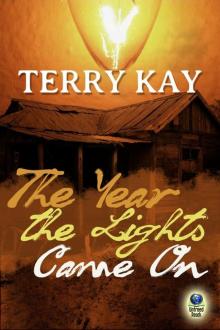 The Year the Lights Came On
The Year the Lights Came On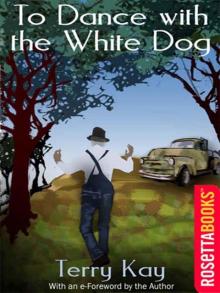 To Dance With the White Dog
To Dance With the White Dog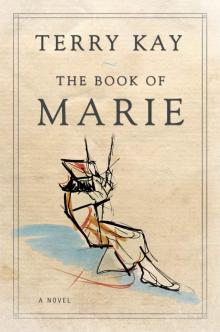 The Book of Marie
The Book of Marie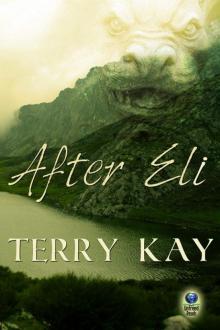 After Eli
After Eli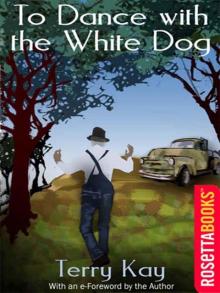 To Dance with the White Dog: A Novel of Life, Loss, Mystery and Hope (RosettaBooks into Film)
To Dance with the White Dog: A Novel of Life, Loss, Mystery and Hope (RosettaBooks into Film)